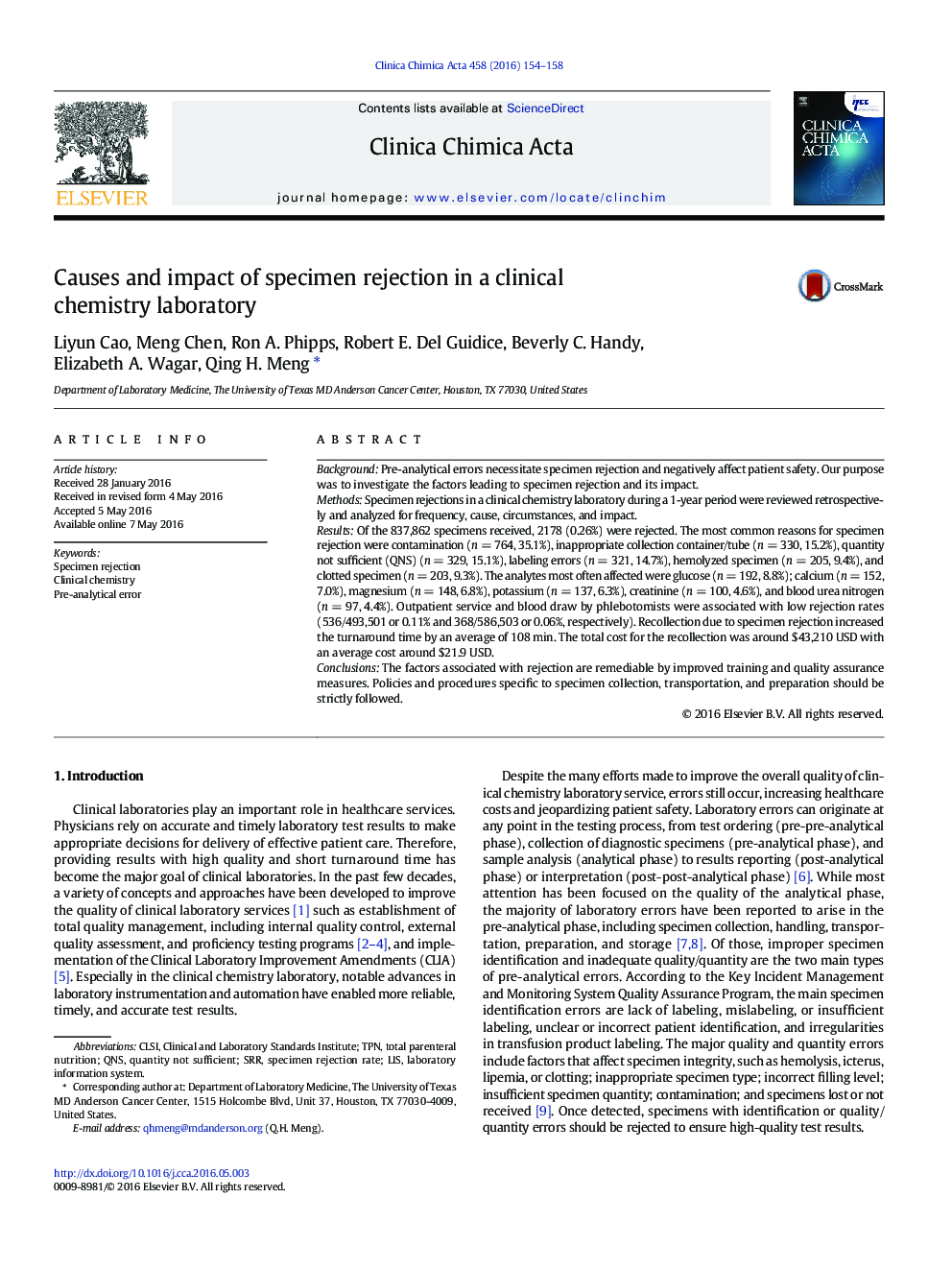| Article ID | Journal | Published Year | Pages | File Type |
|---|---|---|---|---|
| 1965113 | Clinica Chimica Acta | 2016 | 5 Pages |
•Pre-analytical errors leading to specimen rejection were investigated.•Specimen rejections result in prolonged turnaround time and increased health care cost.•Phlebotomy education is necessary to reduce pre-analytical errors.
BackgroundPre-analytical errors necessitate specimen rejection and negatively affect patient safety. Our purpose was to investigate the factors leading to specimen rejection and its impact.MethodsSpecimen rejections in a clinical chemistry laboratory during a 1-year period were reviewed retrospectively and analyzed for frequency, cause, circumstances, and impact.ResultsOf the 837,862 specimens received, 2178 (0.26%) were rejected. The most common reasons for specimen rejection were contamination (n = 764, 35.1%), inappropriate collection container/tube (n = 330, 15.2%), quantity not sufficient (QNS) (n = 329, 15.1%), labeling errors (n = 321, 14.7%), hemolyzed specimen (n = 205, 9.4%), and clotted specimen (n = 203, 9.3%). The analytes most often affected were glucose (n = 192, 8.8%); calcium (n = 152, 7.0%), magnesium (n = 148, 6.8%), potassium (n = 137, 6.3%), creatinine (n = 100, 4.6%), and blood urea nitrogen (n = 97, 4.4%). Outpatient service and blood draw by phlebotomists were associated with low rejection rates (536/493,501 or 0.11% and 368/586,503 or 0.06%, respectively). Recollection due to specimen rejection increased the turnaround time by an average of 108 min. The total cost for the recollection was around $43,210 USD with an average cost around $21.9 USD.ConclusionsThe factors associated with rejection are remediable by improved training and quality assurance measures. Policies and procedures specific to specimen collection, transportation, and preparation should be strictly followed.
